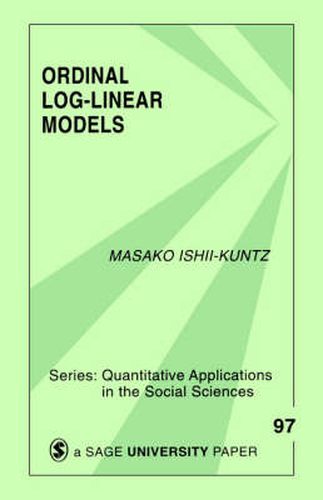Readings Newsletter
Become a Readings Member to make your shopping experience even easier.
Sign in or sign up for free!
You’re not far away from qualifying for FREE standard shipping within Australia
You’ve qualified for FREE standard shipping within Australia
The cart is loading…






Which log-linear models can social scientists use to examine categorical variables whose attributes may be logically rank ordered? Ordinal Log-Linear Models presents a technique that is often overlooked but highly advantageous when dealing with such ordered variables as social class, political ideology, and life satisfaction attitudes. Beginning with an introduction to the concept and measurement of ordinal models, this book provides a detailed description of the various ordinal models, including row effects, column effects, uniform association, and uniform interaction models. Each model is illustrated with data from the National Survey of Families and Households, with which the author discusses the fit of the models, how alternative models compare, and odds ratios. Additionally, statistical computer software packages that can be used to estimate these models are presented.
$9.00 standard shipping within Australia
FREE standard shipping within Australia for orders over $100.00
Express & International shipping calculated at checkout
Which log-linear models can social scientists use to examine categorical variables whose attributes may be logically rank ordered? Ordinal Log-Linear Models presents a technique that is often overlooked but highly advantageous when dealing with such ordered variables as social class, political ideology, and life satisfaction attitudes. Beginning with an introduction to the concept and measurement of ordinal models, this book provides a detailed description of the various ordinal models, including row effects, column effects, uniform association, and uniform interaction models. Each model is illustrated with data from the National Survey of Families and Households, with which the author discusses the fit of the models, how alternative models compare, and odds ratios. Additionally, statistical computer software packages that can be used to estimate these models are presented.